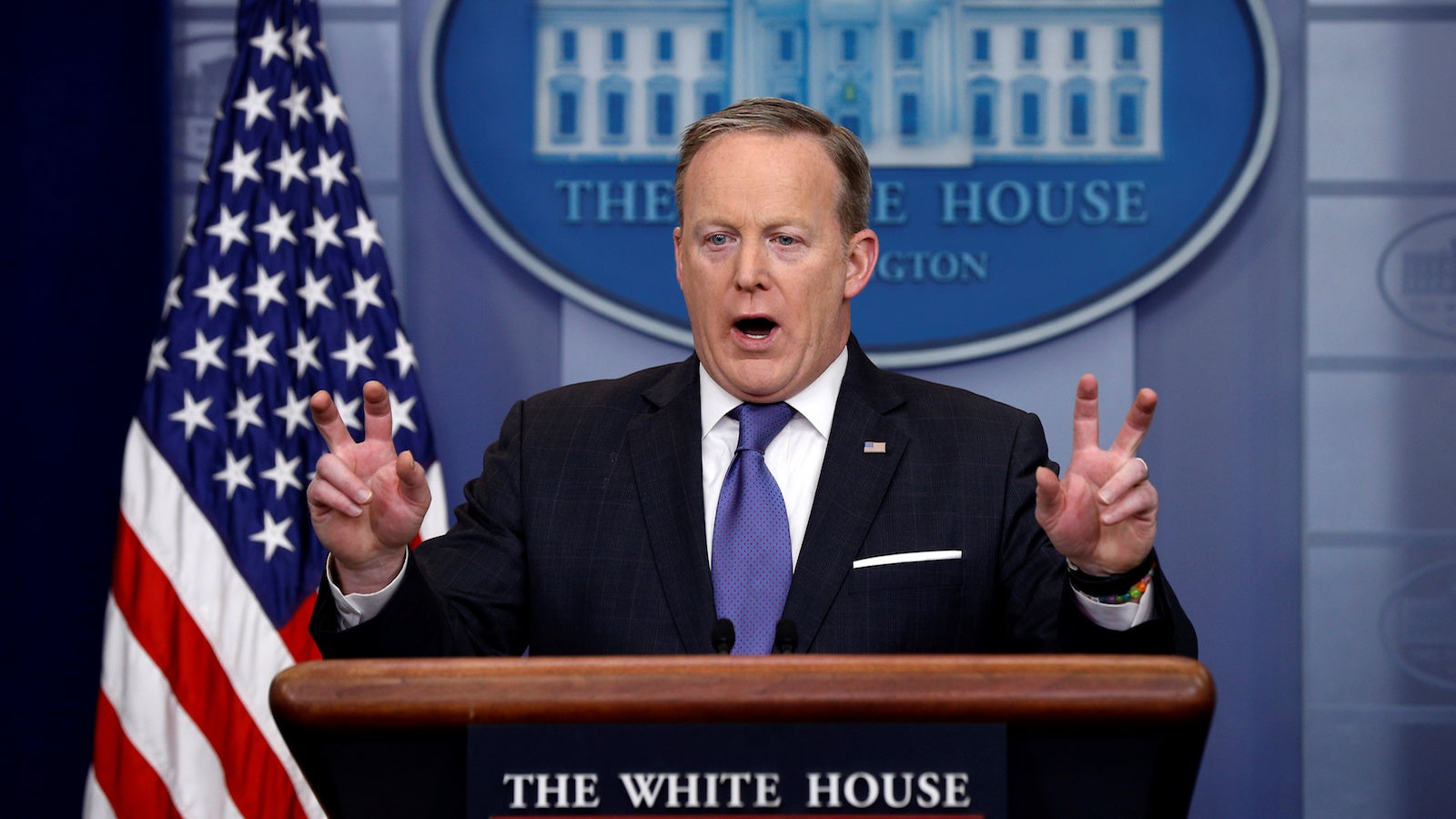This whole “wire tapping” scandal proves Trump doesn’t know how to use quotation marks properly
In the last few weeks, US president Donald Trump took to Twitter to accuse his predecessor of tapping his phones. Facing an investigation, his administration walked it back, arguing that he shouldn’t be taken literally since he had used quotation marks.


In the last few weeks, US president Donald Trump took to Twitter to accuse his predecessor of tapping his phones. Facing an investigation, his administration walked it back, arguing that he shouldn’t be taken literally since he had used quotation marks.
Today (March 20) FBI director James Comey closed the matter, saying “I have no information that supports those tweets.” But while his answer is concrete, language is often harder to solidify.
Language is fundamentally ambiguous, and Trump’s communication strategy actively exploits this uncertainty in every medium. Using tactics like gestures and long silences, he tries to make sure he always has room to recant any prior statement. And his use of quotation marks plays right into this strategic revisability.
That’s because quotation marks provide distance from the words they enclose. They have three chief uses, from most standard to most nonstandard:
- Someone else’s words, literally. The canonical use of quotation marks is the one you learned in elementary school—they set off someone else’s words and make it clear they’re not yours. We use them to borrow someone else’s authority or to respond to their comments.
- Someone else’s words, figuratively. We’ve increasingly come to accept a more figurative use of quotation marks, one we associate with finger-quotes and often call scare quotes. In this usage, quotation marks can indicate skepticism, like the term “so-called,” mark sarcasm, or flag a colloquialism. When someone uses quotation marks this way, they’re not necessarily saying the enclosed words were spoken by a particular individual at a particular time—they’re just loosely indicating that these words vaguely belong to someone else.
- Emphasis. The use of quotation marks for emphasis is nonstandard, but it’s becoming more common and more widely accepted. Trump uses quotation marks for emphasis all the time, and he’s often criticized for this usage.
All of these uses distance the speaker from their words. No wonder Trump loves quotation marks so much—they deny accountability. But when does working in linguistic wiggle room equate to straight-out deception? There are real consequences for politicians who are perceived as lying, and Trump has pushed that line further than most.
The indeterminate interpretations of these punctuation marks gives him even more space to move. Did he mean to emphasize, or to doubt, or does it fall in between? And sometimes Trump’s quotation marks are just kind of… there. None of these categories quite explain this tweet, or this one.
But should we really care about which grammatical marks Trump does or does not use? As my fellow linguist Deborah Cameron writes, “[Trump has] been lambasted as often for his limited vocabulary, fractured syntax and inability to spell ‘hereby’ as he has for his bigotry, dishonesty and megalomania…By all means take issue with bigots—but for their politics, not their punctuation. Criticize their views, not the size of their vocabulary. Stop using their grammar as a measure of their moral worth. Language pedantry is snobbery, and snobbery is prejudice.”
That said, the law takes punctuation seriously. Just a few days ago, a court case in Maine depended on the absence of a serial comma. And as Comey recently revealed, quotation marks don’t stand up to the critical gaze of the FBI, either.
So even if the public chooses to give Trump a pass on his punctuation, his strategic ambiguity may finally have found its limits: The law will hold the president accountable for what he says, quotation marks or not.
Let’s hope that this time he’s not just in “trouble,” but trouble.